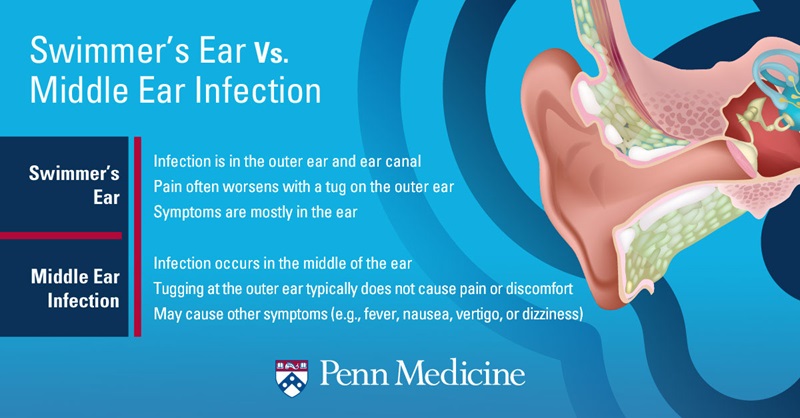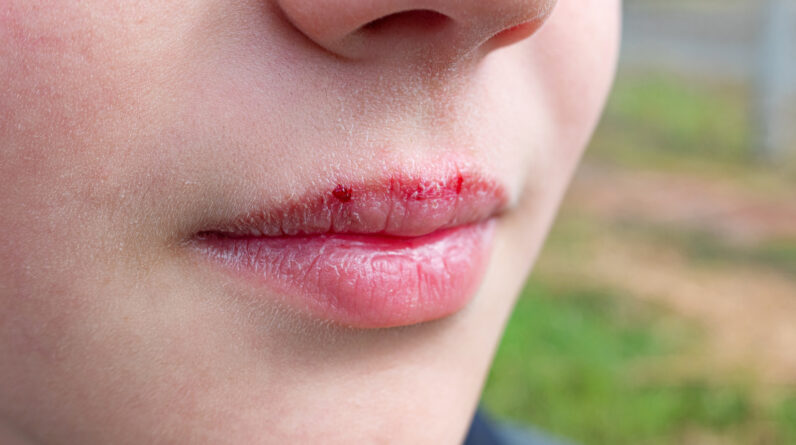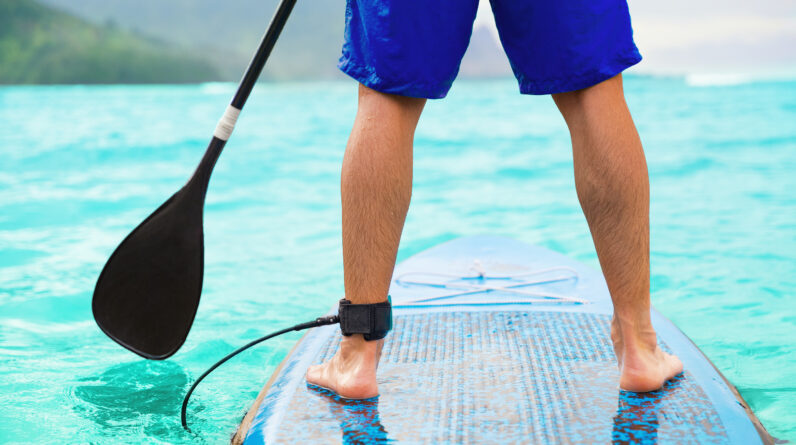
Imagine diving into the refreshing waters of a crystal-clear lake or riding the waves on a sunny beach day. While water sports are thrilling and invigorating, they can also bring about an unwelcome guest: swimmer’s ear. This pesky condition, characterized by inflammation and infection of the ear canal, can put a damper on your aquatic adventures. Luckily, there are effective strategies to prevent and treat swimmer’s ear, ensuring your time in the water remains enjoyable and itch-free. So, whether you’re a seasoned swimmer or a beginner trying out water sports for the first time, read on to discover the best ways to protect your ears and keep swimmer’s ear at bay.
Prevention
Keep ears dry
One of the key ways to prevent swimmer’s ear is by keeping your ears dry. After swimming or participating in any water activities, it is important to thoroughly dry your ears with a towel. Gently tilt your head to the side to allow any trapped water to drain out. Ensuring that your ears are completely dry helps prevent the growth of bacteria or fungi that can cause swimmer’s ear.
Use earplugs
Using earplugs can be an effective preventative measure against swimmer’s ear. These small devices create a barrier between your ears and the water, preventing water from entering the ear canal. There are various types of earplugs available, including custom-molded ones that provide a snug fit. By wearing earplugs, you significantly reduce the chances of developing swimmer’s ear.
Avoid excessive cleaning
While it is important to keep your ears clean, excessive cleaning can actually increase the risk of swimmer’s ear. The ear has a natural self-cleaning mechanism that removes excess earwax and debris. By constantly inserting cotton swabs or other foreign objects into your ears, you disrupt this natural process and can inadvertently cause irritation or damage to the ear canal. It is best to leave the cleaning to your body’s natural mechanisms and only clean the outer part of your ear.
Dry ears after swimming
After swimming, be sure to dry your ears thoroughly. Excess moisture in the ear canal can create a breeding ground for bacteria and fungi. A gentle tilt of the head, combined with using a soft towel to dry the outer ear, can help remove any trapped water. This simple step can go a long way in preventing swimmer’s ear.
Avoid swimming in polluted water
Swimming in polluted water can significantly increase the risk of developing swimmer’s ear. Polluted water often contains harmful bacteria and pollutants that can enter the ear canal and cause infections. It is important to choose swimming locations wisely and avoid swimming in areas where water quality may be compromised. Opt for clean and well-maintained swimming pools or natural bodies of water that have been tested for their safety.
Choosing the Right Treatment
Consult with a healthcare professional
If you suspect that you have developed swimmer’s ear or are experiencing symptoms such as itching, pain, or discharge from the ear, it is important to consult with a healthcare professional. They will be able to assess your condition and recommend the appropriate treatment options. Self-diagnosis and self-medication may not provide the desired results and can potentially lead to complications.
Assess the severity of the infection
The severity of the swimmer’s ear infection will determine the appropriate treatment. Mild cases of swimmer’s ear can often be treated with home remedies, while more severe or persistent cases may require prescription medications. Evaluating the severity of the infection will help guide you in choosing the right treatment plan.
Consider age and medical history
When selecting a treatment for swimmer’s ear, it is important to consider factors such as age and medical history. Certain treatments may not be suitable for infants, young children, or individuals with specific medical conditions. Consulting with a healthcare professional will help ensure that the chosen treatment is safe and effective for your specific situation.
Evaluate treatment options
There are various treatment options available for swimmer’s ear, ranging from home remedies to prescription medications. It is important to evaluate the different options and choose the one that best suits your needs. Home remedies can often provide relief for mild cases, while prescription medications may be necessary for more severe or persistent infections. Discussing the pros and cons of each treatment option with a healthcare professional will help you make an informed decision.

This image is property of www.verywellhealth.com.
Home Remedies
Use a warm compress
A warm compress can help alleviate the discomfort associated with swimmer’s ear. Simply soak a clean washcloth in warm water and gently place it over the affected ear. The warmth helps to soothe pain and reduce inflammation. This can be done multiple times a day for relief.
Try over-the-counter ear drops
Over-the-counter ear drops can be an effective remedy for swimmer’s ear. These drops often contain a combination of ingredients that help to eliminate the infection and reduce the symptoms. Before using ear drops, it is important to read and follow the instructions carefully. If symptoms persist or worsen, it is recommended to seek medical advice.
Apply a few drops of vinegar and alcohol solution
A mixture of vinegar and rubbing alcohol can help create an unfavorable environment for bacteria or fungi to thrive in the ear canal. Mix equal parts of vinegar (white or apple cider) and rubbing alcohol, and using a clean dropper, place a few drops into the affected ear. Allow the mixture to sit for a few minutes before draining it out. This can be done once or twice a day for relief.
Use a hairdryer on low setting
Using a hairdryer on a low, cool setting can help to evaporate any trapped moisture in the ear. Hold the hairdryer at least 12 inches away from your ear and gently move it in a circular motion. The gentle airflow will promote drying and prevent the growth of bacteria or fungi. Be cautious not to use a high heat setting, as this can cause burns or further irritation.
Avoid using cotton swabs
Using cotton swabs to clean the inside of the ears can actually worsen the infection and cause further damage. Swabbing the ear canal can push debris, wax, or bacteria deeper into the ear, leading to additional complications. Instead, focus on cleaning the outer part of the ear and leave the cleaning of the ear canal to the body’s natural mechanisms.
Prescription Medications
Antibiotic ear drops
In more severe cases of swimmer’s ear, antibiotic ear drops may be prescribed by a healthcare professional. These ear drops contain antibiotics that specifically target the bacteria causing the infection. Follow the instructions provided by the healthcare professional carefully and continue the treatment for the recommended duration, even if symptoms improve.
Oral antibiotics
For severe or persistent cases, oral antibiotics may be prescribed. These medications work systemically to eliminate the infection and reduce inflammation. It is important to take oral antibiotics as directed by a healthcare professional and complete the full course of treatment to ensure effective eradication of the infection.
Antifungal medications
In cases where the swimmer’s ear is caused by a fungal infection, antifungal medications may be prescribed. These medications target the fungi responsible for the infection and help to eliminate it. Follow the instructions provided by a healthcare professional carefully and continue the treatment for the recommended duration.
Corticosteroids
Corticosteroids may be prescribed to reduce inflammation and alleviate symptoms associated with swimmer’s ear. These medications can help to relieve pain, itching, and swelling. It is important to use corticosteroids as directed by a healthcare professional and follow the recommended treatment plan.
This image is property of www.pennmedicine.org.
Ear Cleaning and Maintenance
Don’t clean ears excessively
While it is important to keep your ears clean, excessive cleaning can actually do more harm than good. The ear has a natural self-cleaning mechanism that removes excess earwax and debris. Constantly inserting cotton swabs or other foreign objects into your ears can disrupt this process and lead to irritation or damage. It is best to allow the ear to clean itself, and only clean the outer part of the ear with a gentle cloth or tissue.
Avoid inserting foreign objects
It is important to avoid inserting any foreign objects into your ears, as this can cause damage to the delicate structures within the ear canal. This includes cotton swabs, bobby pins, or any other sharp objects. These objects can push debris or wax deeper into the ear, potentially leading to an infection or injury. Stick to gentle cleaning of the outer ear only.
Clean ears gently
When cleaning the outer ear, it is important to do so gently. Use a soft cloth or tissue to wipe away any visible dirt or debris. Avoid applying excessive pressure or inserting anything into the ear canal. Gentle cleaning helps maintain the ear’s natural balance and reduces the risk of irritation or injury.
Consider using ear cleaning solutions
Ear cleaning solutions can be used to help remove excess earwax or debris from the outer ear. These solutions are specifically formulated to be safe for use in the ear and help to soften and dislodge stubborn wax. It is important to follow the instructions provided with the cleaning solution and avoid using them if you have a perforated eardrum or are experiencing any pain or discomfort.
Visit an audiologist for professional cleaning
If you are experiencing recurring earwax buildup or are unable to effectively clean your ears, it may be beneficial to seek the assistance of an audiologist for professional cleaning. They have the expertise and specialized tools to safely and effectively remove excess earwax or debris. Regular visits to an audiologist can help ensure that your ears are clean and in optimal health.
Preventative Ear Drops
Discuss with a healthcare professional
Before using any preventative ear drops, it is important to discuss with a healthcare professional. They can provide guidance on the most suitable options for your specific situation. It is important to consider factors such as allergies, medical history, and current medications before starting any new treatment.
Apply before and after water activities
Preventative ear drops are most effective when used both before and after water activities. Applying a few drops of the ear drops before swimming creates a protective barrier, helping to prevent water from entering the ear canal. After swimming, the ear drops can help to dry out any trapped moisture and reduce the risk of infection. Follow the instructions provided with the ear drops for proper usage.
Look for drops containing alcohol or vinegar
When selecting preventative ear drops, look for products that contain ingredients such as alcohol or vinegar. These ingredients help to create an unfavorable environment for bacteria or fungi to thrive in the ear canal. However, it is important to note that not all ear drops are suitable for everyone, so it is best to consult with a healthcare professional before using any specific product.
Follow the instructions carefully
Proper usage of preventative ear drops is crucial for effectiveness. Always read and follow the instructions provided with the ear drops. This includes the number of drops to use, the frequency of application, and any specific precautions or warnings. If you have any doubts or questions, consult with a healthcare professional for clarification.
Monitor for any adverse reactions
While rare, some individuals may experience adverse reactions to certain ear drops. This can include increased irritation, redness, or swelling of the ear. If you are using preventative ear drops and notice any abnormal symptoms, discontinue use immediately and consult with a healthcare professional for further guidance.
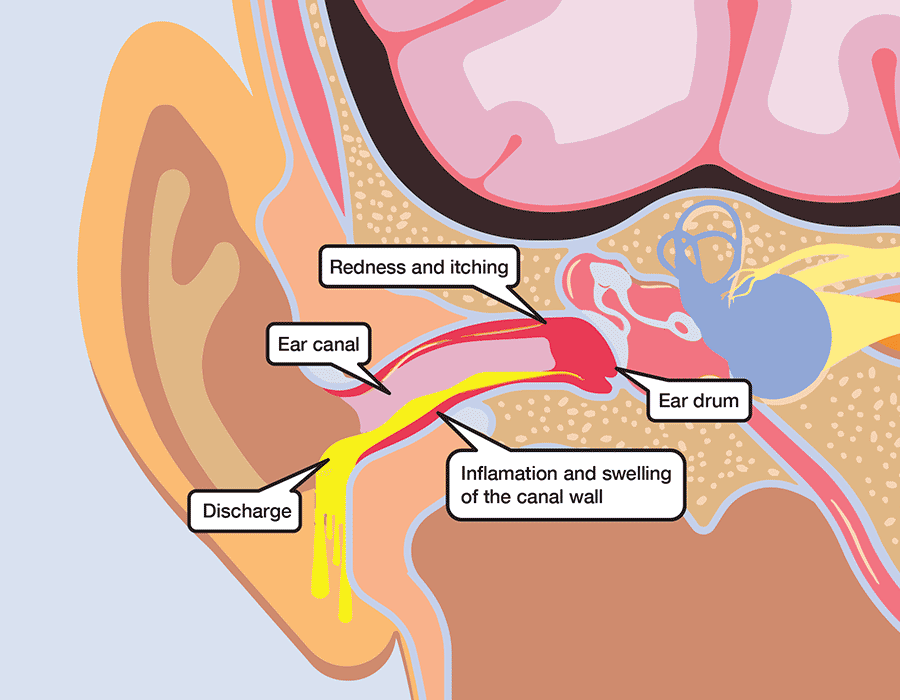
This image is property of www.citrusreef.com.
Swimming Precautions
Avoid diving too deep
When participating in water activities, it is important to avoid diving too deep. The pressure changes that occur at deeper depths can increase the risk of water entering the ear canal and causing swimmer’s ear. Stick to safe diving depths and avoid any activities that may put excessive pressure on the ears.
Don’t swim in excessively cold water
Exposing your ears to excessively cold water can increase the risk of swimmer’s ear. Cold water can cause the blood vessels in the ear canal to constrict, reducing the blood flow and making the ears more susceptible to infection. Consider swimming in water with a comfortable temperature and avoid prolonged exposure to cold water.
Use protective swim caps
Wearing a swim cap can provide an extra layer of protection for your ears. A swim cap helps to prevent water from entering the ear canal and can significantly reduce the risk of swimmer’s ear. There are various types of swim caps available, so choose one that fits comfortably and covers the ears properly.
Keep water out of ears during submersion
When participating in water sports or activities that involve submersion, it is important to keep water out of your ears. There are various techniques that can help achieve this, such as using earplugs, wearing a swim cap, or tilting your head to the side to allow water to drain out. By avoiding water entering the ear canal, you decrease the chances of developing swimmer’s ear.
Consider wearing earbands
Earbands are protective accessories that cover the ears and provide an extra layer of defense against water entering the ear canal. They are particularly useful for individuals who have a history of swimmer’s ear or are more prone to ear infections. Earbands are available in different sizes and styles, so choose one that fits securely and comfortably.
Regular Ear Check-ups
Schedule routine appointments with a healthcare professional
Regular ear check-ups with a healthcare professional are important for identifying any potential issues or changes in ear health. They can assess your ears for any signs of infection, excess wax buildup, or other abnormalities. By scheduling routine appointments, you can catch and address any ear-related concerns early on.
Seek medical advice for recurring swimmer’s ear
If you are experiencing recurring episodes of swimmer’s ear, it is important to seek medical advice. Recurring swimmer’s ear can be an indication of underlying factors that need to be addressed. A healthcare professional can evaluate your situation and recommend appropriate preventative measures or further treatment options.
Monitor for any changes or symptoms
Regularly monitor your ears for any changes or symptoms of swimmer’s ear. This includes itching, pain, redness, or discharge from the ear. Being vigilant and proactive in recognizing any signs or symptoms can help in the early diagnosis and treatment of swimmer’s ear.
Discuss preventative measures
During your regular ear check-ups, be sure to discuss preventative measures with your healthcare professional. They can provide guidance on specific measures you can take to prevent swimmer’s ear based on your individual circumstances. This may include recommendations for ear care, hygiene practices, or the use of preventative ear drops.

This image is property of www.verywellhealth.com.
Dry Ear Tips
Tilt head to drain water after swimming
After swimming or participating in water activities, gently tilt your head to the side to allow any trapped water to drain out. This simple action can help remove excess moisture and prevent the growth of bacteria or fungi in the ear canal. Take a moment to ensure that your ears are dry before continuing with your day.
Use a towel to dry outer ear
To dry the outer ear after swimming, use a clean and soft towel. Gently pat the outer ear and surrounding areas to absorb any moisture. Avoid rubbing vigorously, as this can cause irritation or damage to the skin. Take your time and ensure that the area is thoroughly dry before moving on.
Create a vacuum using palm and finger
To further aid in drying the ears after swimming, you can create a vacuum using your palm and finger. Place your palm over the affected ear and press gently, forming a seal. Next, quickly lift your hand up, creating a vacuum effect. This can help to draw out any remaining moisture from the ear canal. Repeat this motion a few times until no more water is felt.
Try homemade drying solutions
Homemade drying solutions can also be effective in aiding the drying process. One popular option is to use a mixture of equal parts rubbing alcohol and white vinegar. Using a clean dropper, place a few drops of the solution into the affected ear and allow it to sit for a few minutes. Tilt your head to the side to drain out any excess liquid. Ensure that you are not experiencing any pain or discomfort before attempting this method.
Avoid using cotton swabs
It cannot be stressed enough that using cotton swabs to clean the inside of the ears is not recommended. Swabbing the ear canal can push debris, wax, or bacteria deeper into the ear, which can cause infection or damage. Stick to gentle outer ear cleaning using a soft cloth or tissue, and let the body’s natural mechanisms take care of the rest.
Understanding Swimmer’s Ear
Definition and causes
Swimmer’s ear, also known as otitis externa, is an infection of the outer ear canal. It is often caused by water entering the ear and creating a moist environment that promotes the growth of bacteria or fungi. The increased moisture, combined with factors such as excess earwax or skin abrasions, can lead to the development of swimmer’s ear.
Common symptoms
Symptoms of swimmer’s ear can vary from mild to severe and may include itching, pain, redness, swelling, discharge from the ear, and a feeling of fullness or blockage. Some individuals may also experience difficulty hearing or tinnitus (ringing in the ear).
Risk factors
Certain factors can increase the risk of developing swimmer’s ear. These include frequent swimming or water activities, particularly in contaminated or polluted water. Individuals with excess earwax, skin conditions such as eczema, or those who insert objects into their ears such as cotton swabs or hearing aids are also at an increased risk.
Complications and prevention
If left untreated, swimmer’s ear can lead to complications such as a chronic infection, cellulitis (skin infection), or damage to the ear canal or surrounding structures. However, with proper prevention and treatment, swimmer’s ear can usually be effectively managed and prevented. By following the preventative measures outlined in this article and seeking timely medical advice, the risk of complications can be significantly reduced.
In conclusion, preventing and treating swimmer’s ear when participating in water sports requires a combination of preventative measures, suitable treatment options, and proper ear care. By keeping your ears dry, using earplugs, avoiding excessive cleaning, and taking precautions while swimming, you can greatly reduce the risk of developing swimmer’s ear. In the event of an infection, consulting with a healthcare professional, considering the severity of the infection, and choosing the appropriate treatment options are crucial. From utilizing home remedies to using prescription medications, there are various treatment options available for swimmer’s ear. Additionally, maintaining good ear cleaning and maintenance practices, discussing preventative measures during regular ear check-ups, and following dry ear tips can further aid in preventing swimmer’s ear. Understanding the causes, symptoms, risk factors, and complications associated with swimmer’s ear also plays a vital role in preventing and managing the condition effectively. By incorporating these strategies and practicing good ear hygiene, you can enjoy water sports while minimizing the risk of swimmer’s ear.
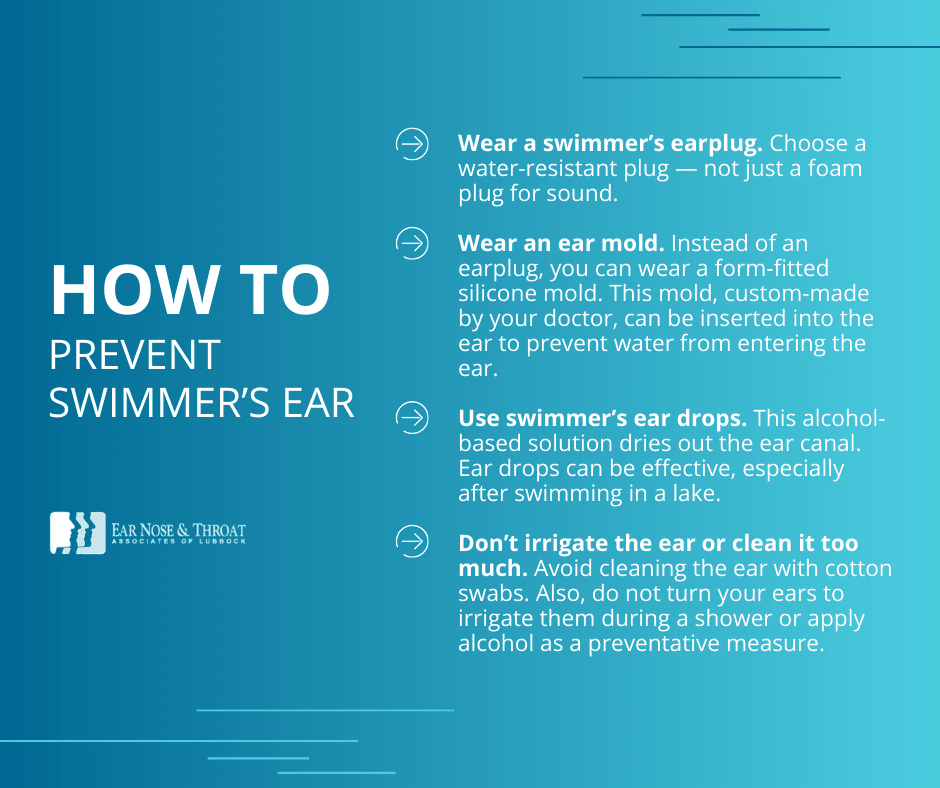
This image is property of www.entlubbock.com.

